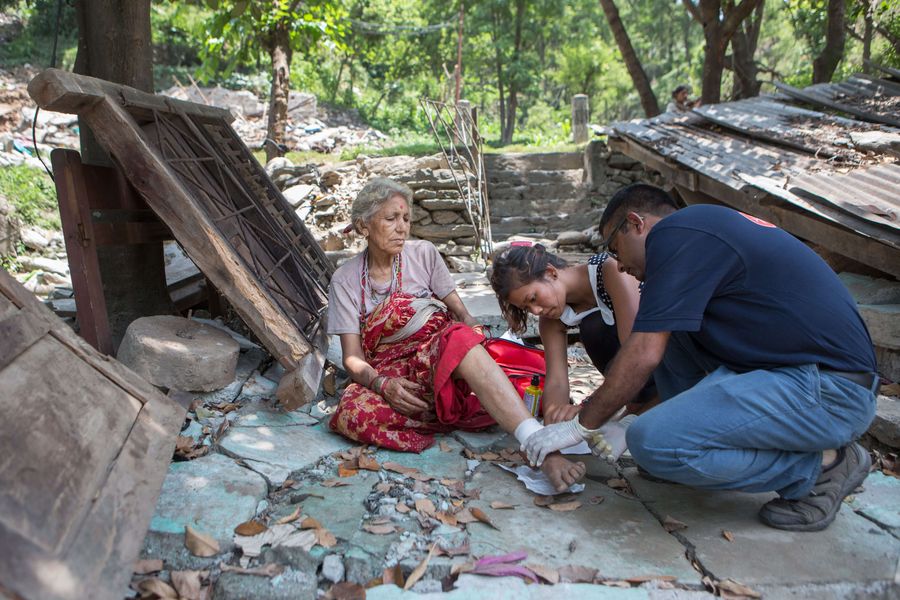Nepal Earthquake: A look back at the last three years
Just before noon on April 25, 2015, an earthquake measuring 7.8 magnitude struck an area between Kathmandu and Pokhara in Nepal. A series of aftershocks led to further damage and caused widespread panic. The combined impact of the earthquake and resulting aftershocks led to the deaths of nearly 9000 people and injuries to more than 22,000 people
“It was the worst natural disaster the country had seen in decades,” said Ingo Radtke, Secretary General of Malteser International. “Apart from the loss of life and human suffering, the earthquake caused extensive destruction and damage to housing, infrastructure and livelihoods, leading to a drastic reduction in living conditions, income, and access to basic services, such as health and water and sanitation.”

“We began response procedures immediately,” he continued. “A day after the earthquake, we dispatched an emergency response team to the crisis region to provide urgent medical aid and psychological care to people affected by the disaster.” Malteser International’s response ensured survivors and their families received emergency shelter, hygiene kits and medical supplies. Three months following the earthquake, and after immediate needs were met, Malteser International began working towards reconstruction and recovery in the affected districts of Sindhulpalchowk, Kavrepalanchowk and Nuwakot.
Emergency relief is viewed at Malteser International as part of a cycle that requires a long-term commitment in vulnerable countries. This ensures that communities are able to build back stronger for the future. “Emergency responses are sustainable when they involve plans to strengthen local institutions and prepare them against future disasters,” said Serge Birtel, Malteser International’s Country Desk Officer for Nepal. “By raising the standard of disaster preparedness in vulnerable countries, and strengthening the local capacities to respond to future catastrophes, we hope to make it possible for vulnerable countries to take hold of their future, and respond to disasters without external help,” he added.
Since the earthquake in Nepal, Malteser International has constructed over 250 earthquake resistant homes, and trained local masons in safer building techniques. In addition to this, it has rehabilitated or constructed more than 300 water systems and toilet facilities, while training school teachers and health personnel on issues related to mental health.
Our partnerships with local organizations have also seen us support the construction or renovation of over 20 health facilities, bringing life-saving medical care to people in areas that are hard to reach. By collaborating with existing medical structures at Dhulikhel hospital, for instance, we were able to bring medical treatment to people in Lamosanghu and outlying areas, who would otherwise have been unable to access it. Today, members of these communities continue to enjoy access to healthcare thanks to a health facility recently constructed as part of our response.
Three years on, we are still committed to helping Nepal’s most vulnerable people achieve better lives. Our team, together with our local partners, will continue to provide effective humanitarian relief when needed, while at the same time making investments geared at rooting out extreme poverty and vulnerability in communities across the country.
How you can help
- Donate: Your donation helps us respond quickly and effectively when disasters strike, and supports our ongoing efforts to help people get back on their feet.
- Stay informed. Read more stories about our work in Nepal.
- Tell your friends. Share this story to spread the word for the sake of millions of people who need our help.









